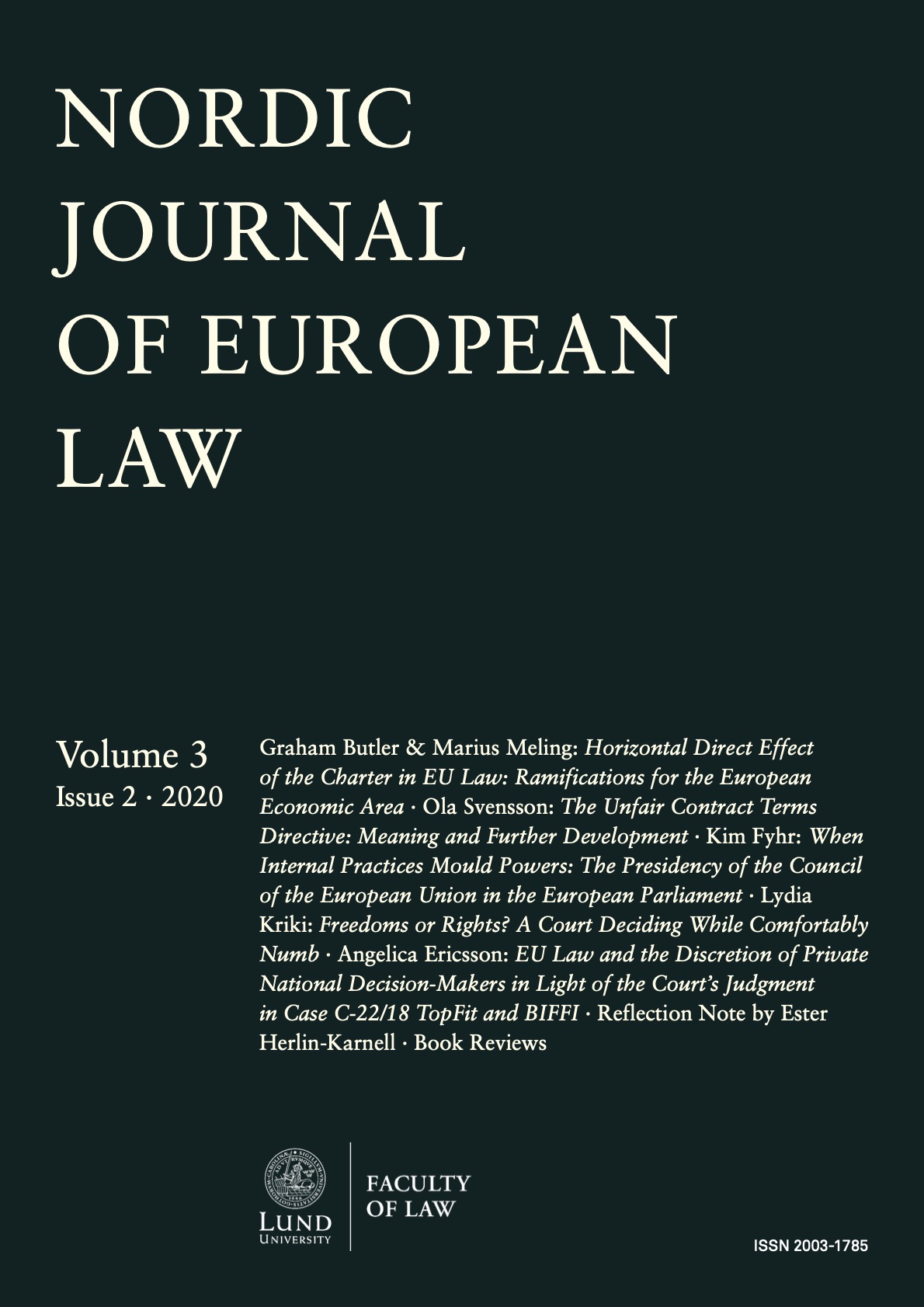Freedoms or Rights? A Court Deciding While Comfortably Numb
Main Article Content
Abstract
EU was quite a lot valiant back in 1957, when the Treaty of Rome established the dogma of free movement, paving the road for what was considered to be an economic integration. The dogma was founded on the principle of freedom relating to goods; and the subsequent EU Treaties strengthened the freedom of movement for services, persons and capital. However, they were not all the freedoms equally developed. For many years, it seemed that the European Union gave a fairly obvious advantage to the economic significance instead of focalizing on its people and the parameters of their needs. Subsequently, striking a balance between fundamental freedoms and fundamental rights has become a frequent exercise for the CJEU ever since, as well as a difficult puzzle. Bearing in mind that the digital era brings new challenges for both the circulation of commodities and the preservation of rights, the puzzle gets more and more complex: a tug-of-war between the tech-giants and our information privacy. By using the proportionality principle as its most effective weapon, the CJEU has built a convincing case-law, one step at time. However, does it really find the appropriate balance, or the conundrum is more complex than it seems? The present paper attempts to answer this question.
Article Details

This work is licensed under a Creative Commons Attribution-NonCommercial-NoDerivatives 4.0 International License.

